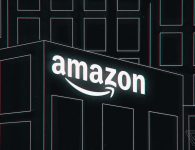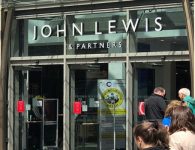

The consumer shift to ecommerce continued in August, with online sales growth slow – but still ahead of sales that are flatlining or growing slowly across all channels, two sets of new figures suggest.
The BRC-KPMG Retail Sales Monitor for August 2019 showed online sales of non-food product grew by 2.2% – below both the three-month (+3.4%) and 12-month (+4.3%) trends. Some 29.5% of sales took place online, up from 28% a year earlier.
Total sales, across all channels, were flat, with sales above the three-month trend (-0.4%) but below the 12-month trend (+0.4%). That, said the British Retail Consortium (BRC), was the lowest 12-month average on record.
“Greater economic and political uncertainty has driven down consumer demand,” said Helen Dickinson, chief executive of the BRC. “While the summer weather gave a small boost to food sales, this was cancelled out by a drop in non-food sales.”
Meanwhile Barclaycard figures for the month showed a 1.3% rise in consumer spending on its debit and credit cards, with essential spending rising by 0.6%, while non-essential spending rose by 1.4%, with pubs (+10.9%) and restaurants (+8.6%) benefiting from holiday spending. Spending also rose (+8%) at discount stores.
Esme Harwood, director at Barclaycard, said: “August’s figures signal the the end of a fairly subdued summer for consumer spending – showing a marked contrast to the previous August. A weak pound and worries about rising prices are causing concern for many, with Brits looking to better balance their household budgets.”
Store sales decline while online grows slowly
The BRC figures showed non-food retail sales fall by 1.2% over the three months to August, both on a like-for-like and a total basis. That’s below the 12-month average fall of 0.7%. Over the same period, in-store sales of non-food items fell by 3% (LFL and total). That’s lower than the 12-month average decline of 2.6%.
Dickinson said: “Summer discounting and poor footfall have hit in-store sales particularly hard. If the Government wants to avoid seeing further store closures and job losses on the UK high street, they must take action. Last month, 50 retail CEOs wrote to the Chancellor, demanding he fix the broken business rates system, allowing businesses to fund vital investment during this unprecedented period of transformation.”
Paul Martin, UK head of retail at KPMG, said the month had been disappointing one for retail – although it earned a reprieve thanks to back-to-school promotions that boosted sales of children’s fashion and footwear. “It’s clear that for much of the retail market, efforts are being focused on preservation, not growth, in this adverse and uncertain market,” he said.
He added: “With a budgetary spending review, the Brexit crunch point looming and potentially a general election on the cards, it’s clear that the only thing that is certain in the coming months is further uncertainty. It’s vital that retailers insulate themselves for every eventuality and have rigorous contingency plans in place.”
Susan Barratt, chief executive of grocery analysts the IGD, said that the Bank Holiday heatwave had boosted food sales, but said as yet there was little evidence of shoppers stockpiling ahead of the latest Brexit deadline, with only 3% saying they had started to do so.
The Barclaycard report also drew on a consumer confidence survey of 2,005 consumers that suggested one in five Brits were now stockpiling everyday items in case of future shortages.
Commenting on the BRC figures, Grant Coleman, executive vice president EMEA at Emarsys, said all the evidence showed retailers in a “tough predicament”. He said: “According to the BRC’s data, both June and July saw the lowest retail sales for that month in more than 20 years, and August’s figures were also alarming, with in-store sale declines only being offset by continued growth in online sales. Recent reports from analysts at Retail Economics also indicate that ecommerce will become the predominant channel for retail spend within the next 10 years.
“A significant reason for this in-store decline, in addition to macroeconomic factors, is convenience. Thanks to the choice of products available to today’s connected shopper, they no longer need to try out products prior to purchase. Brands are happy to let them try clothes on or test out products at home and send them back for free if they’re not right, because those purchases that do convert are so critical to their bottom line. Consumers therefore demand an exceptional in-store experience to shop on the high street, rather than online.”
Image: Fotolia
read more at http://internetretailing.net/ by Chloe Rigby
Business








